One of the things that struck me in the product management masterclass I did with Rachel Dubois was my interest in mind maps.
In the pre-COVID period, when remote work was still an anomaly, and we used tactile and physical tools like post-its, flip charts, whiteboards, everything proved more effective when we didn’t use digital tools…except for mind maps. Through digital tools, mind maps remained effective, powerful. Even more so, because digital tools offer an immediate inversion of the reading direction of the map if needed. And this was very interesting for those who were more receptive to reading from right to left rather than left to right. From execution to meaning or from meaning to execution.
The power of mind maps
Mind maps describe reasoning. They force us not to start from the solution, or if we start from the solution to express what led us to it. They make our reasoning visual. They thus express the what, the why and the how. They allow us to open up reflection and share meaning.
A few points
- Don’t try to fill all the branches, but just the most important ones (it’s up to you to find how to weight them).
- There’s no obligation to start from the beginning (left) of the mind map.
A reduction to the essential
If I try a reduction to the essential, a mind map could look like this:
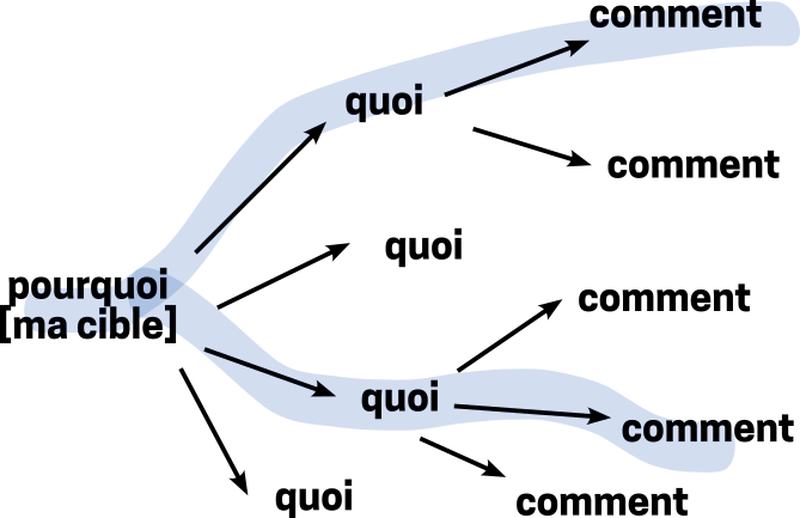
Before rushing to the solution (how) we go through the what box (what we want without talking about how) up to why we want that. We don’t break down all the branches, just those we consider most important.
Then the whole game or challenge is to properly name the steps of our reasoning.
Agile strategy map
With the agile strategy map, from agile42 I believe, it’s about transforming yourself (at least that’s how I’ve used it).
- What transformation am I trying to achieve, transform for what?
- What are the levers on which I must base my transformation? (For example: training, renewal of HR paths, installation in a new center, etc. Perhaps think of the Ishikawa diagram?)
- What tells me that the lever has been activated? What is the signal that indicates that the activation of the lever is a success?
- How to implement this success?
(I like to describe each step of these mind maps through questions).
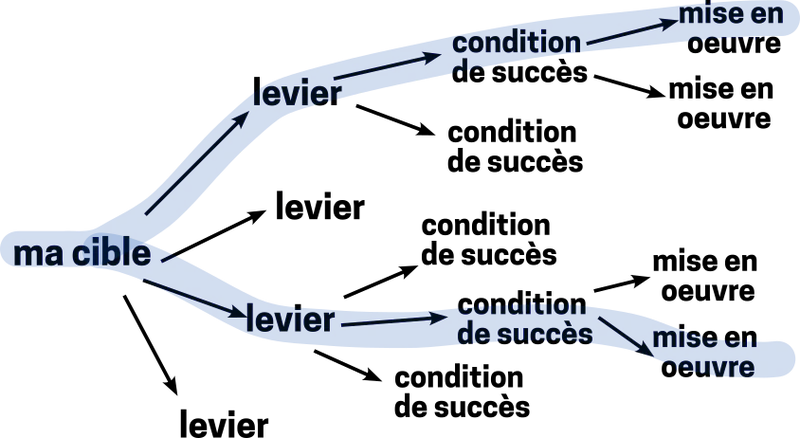
Impact mapping
If we dive into mind maps related to product management, the starting point of this article, we’ll observe in the semantics of each step the evolution of the field. I could say that Teresa Torres’ opportunity tree is just a plagiarism of Annina Koskinen’s well-thought-out execution (or the reverse rather), themselves just a plagiarism of Gojko Adzic’s impact map, who himself says he’s plagiarizing a military approach. But it’s just that for all of them they’re mind maps, they therefore have the same fundamental structure, and the same process that I love so much. It’s in the steps and semantics that the difference and proper use reveal themselves between these ways of doing things.
For impact mapping precisely, at this point in history, the whole question is bringing the user back to the heart of conversations. I still use this one a lot! We’re in 2012: and the user and product management take center stage.
- What is my target?
- Who do I need to impact to reach this target?
- What impact must I have? (And by impact we mean benefit or change in usage: I go faster, it’s more reliable, I have more of, etc.)
- How to implement this impact?
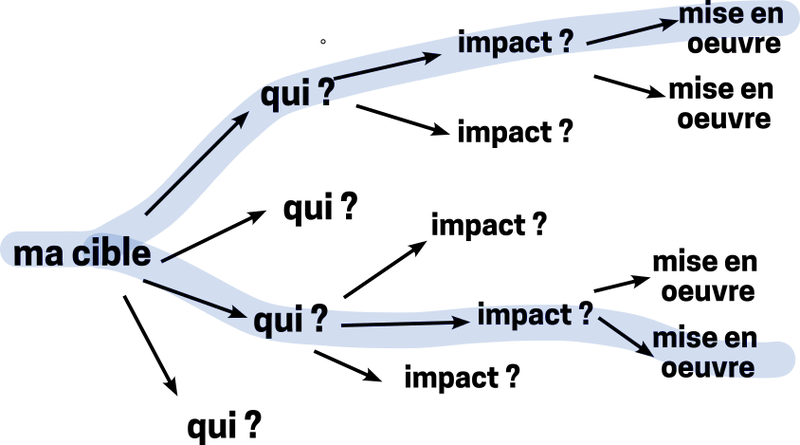
Gojko Adzic created impact mapping in 2012.
Opportunity tree map
In 2016, Teresa Torres proposed the opportunity tree map. In 2011 Eric Ries’ book “Lean startup” came out and in 2015 it was the boom of this idea. What opportunity can I seize? What experimentation (ephemeral before iterating or pivoting) can I conduct? This is also still completely relevant!
- What is my target?
- What opportunity do I imagine to reach it?
- What solution to seize this opportunity?
- (What MVP?) What experimentation can I conduct to validate my solution?
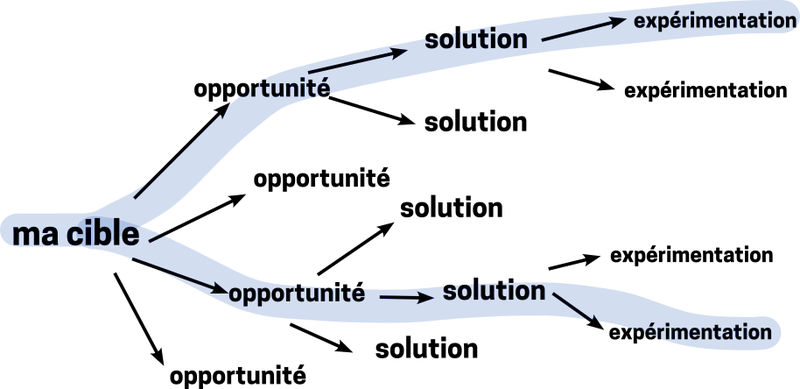
Thoughtful execution framework
We’re in 2020, seizing opportunities by instinct is no longer enough. The early adventurers of lean startup have been joined by the masses, and a certain dose of rationality has been injected into the process. Around 2017/2018 marked the beginning of the reign of data.
The framework proposed by Spotify and Annina Koskinen is another mind map. The subtitle is revealing: from gut to plan (no more just instinct).
And then we’ve developed our vocabulary quite a bit: “hypothesis”, “learning”, at the end of the 2010/2020 decade agility has really become mature (in places where there’s really agility).
- What is my target?
- What does my data tell me?
- What problem and therefore opportunity do I detect?
- What hypothesis do I make to find an opportunity in this problem?
- What implementation solution for this hypothesis?
- What do I learn (loop back to data) from implementing this solution?
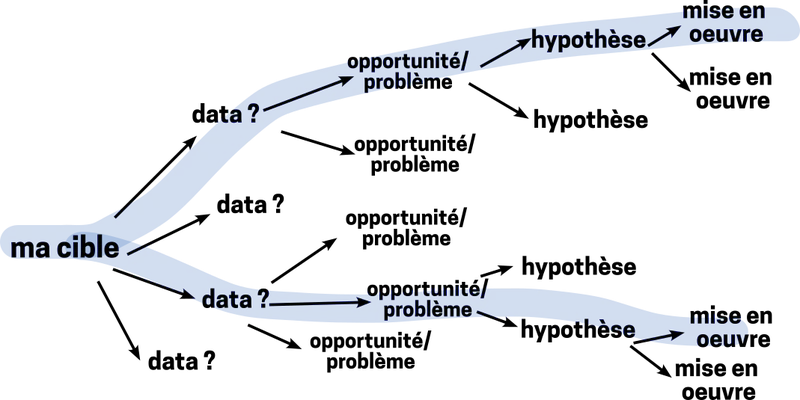
One last reading to finish: Wikipedia on mind mapping
And otherwise, get to your maps.